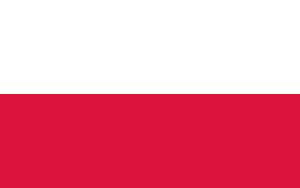The Second Polish Republic, Second Commonwealth of Poland or "interwar Poland" refers to the country of Poland between the First and Second World Wars (1918–1939). Officially known as the Republic of Poland or the Commonwealth of Poland (Polish: Rzeczpospolita Polska), the Polish state was created in 1918, in the aftermath of World War I. When, after several regional conflicts, the borders of the state were fixed in 1922, Poland's neighbours were Czechoslovakia, Germany, the Free City of Danzig, Lithuania, Latvia, Romania and the Soviet Union. It had access to the Baltic Sea via a short strip of coastline either side of the city of Gdynia. Between March and August 1939, Poland also shared a border with the then-Hungarian province of Carpathian Ruthenia. Despite internal and external pressures, it continued to exist until 1939, when Poland was invaded by Nazi Germany, the Soviet Union and the Slovak Republic, marking the beginning of World War II in Europe. The Second Republic was significantly different in territory to the current Polish state, controlling substantially more territory in the east and less in the west.The Second Republic's land area was 388,634 km2, making it, in October 1938, the sixth largest country in Europe. After the annexation of Zaolzie, this grew to 389,720 km2. According to the 1921 census, the number of inhabitants was 27.2 million. By 1939, just before the outbreak of World War II, this had grown to an estimated 35.1 million. Almost a third of population came from minority groups: 13.9% Ukrainians; 10% Jews; 3.1% Belarusians; 2.3% Germans and 3.4% percent Czechs, Lithuanians and Russians. At the same time, a significant number of ethnic Poles lived outside the country borders, many in the Soviet Union. The Republic endured and expanded despite a variety of difficulties: the aftermath of World War I, including conflicts with Ukraine, with Czechoslovakia, with Lithuania and with Soviet Russia and Ukraine; the Greater Poland and Silesian Uprisings; and increasing hostility from Nazi Germany.Despite lacking an overseas empire, Poland maintained a slow but steady level of economic development. The cultural hubs of interwar Poland – Warsaw, Kraków, Poznań, Wilno and Lwów – became major European cities and the sites of internationally acclaimed universities and other institutions of higher education. By 1939, the Republic had become "one of Europe's major powers". Nevertheless, the Polish economist Witold Gadomski has calculated that the Republic was a much poorer nation than contemporary Poland. According to his estimates, Poland's gross national product in 1929 was between 50 and 60 billion US$s, which compares starkly with an estimate in 2007 of 422 billion dollars. In 2007, Poland's share in international trade was 1.1%, while in 1937, it was 0.8%.

Dissolution date
1939-09-01
Dissolution year
1939
Founding date
1918-11-11
Founding year
1918



Comment
0